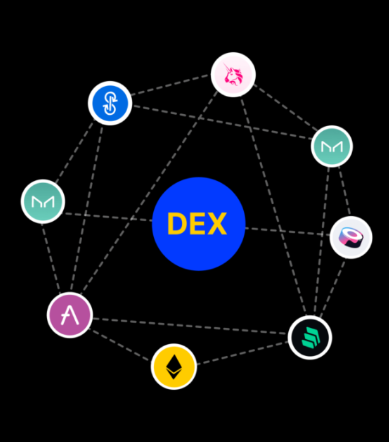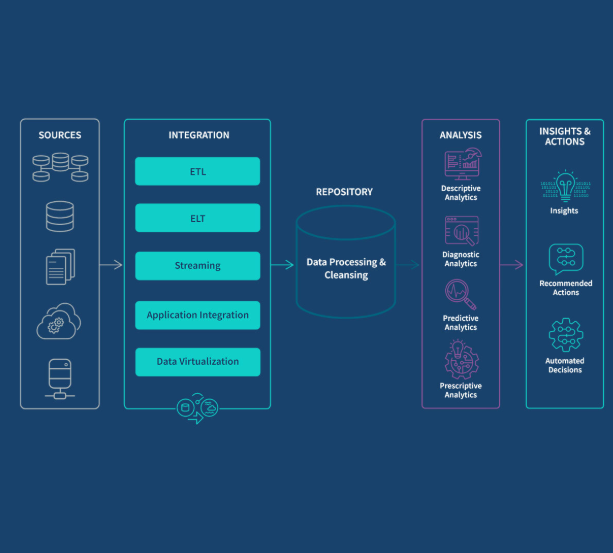
Cryptocurrency trading has grown significantly, with a diverse range of platforms catering to different user needs. Among the most common are Peer-to-Peer (P2P) and Centralized exchanges, each offering unique experiences. Understanding how they function, their advantages, and drawbacks is essential for anyone involved in crypto trading.
In 2024, the global cryptocurrency user base surged to 562 million, an increase from 420 million in the previous year. Centralized exchanges dominate the market, holding over 52% of the crypto trading platform market share. However, decentralized P2P exchanges are increasingly popular due to their unique benefits. In this article, we’ll explore both types of exchanges, helping you understand their differences, advantages, and which might be the best fit for your needs.
What Are Peer-to-Peer (P2P) Cryptocurrency Exchanges?
Peer-to-peer (P2P) exchanges enable users to trade directly with one another, cutting out intermediaries like centralized platforms. In a P2P system, buyers and sellers set their own terms, negotiate prices, and complete transactions without the need for an intermediary. This creates a more decentralized and flexible trading environment.
Key Features of P2P Exchanges
- Direct User-to-User Transactions
P2P exchanges allow direct trading between individuals, which means no central authority is involved. This provides users with more control over the terms of their trades, making the process more personalized. - Escrow Services
To ensure the security of transactions, P2P exchanges often use escrow systems. Funds are held in escrow until both parties confirm the transaction, reducing the risk of fraud. - Flexible Payment Methods
These exchanges support a variety of payment methods, from bank transfers to mobile wallets, catering to different regional preferences. - Minimal Oversight
P2P platforms generally do not manage or influence the trades beyond providing necessary tools for communication and listing offers. This reduces the control that any central entity has over the trading process.
Pros of P2P Exchanges
- Enhanced Privacy
P2P exchanges typically don’t require extensive identity verification, making them attractive for users who prioritize privacy. - Financial Inclusion
They enable access to cryptocurrency for individuals in underbanked regions, as they support a range of local payment options. - User Control of Funds
Funds are only released once both parties confirm the transaction, meaning users maintain control of their assets throughout the process. - Lower Barriers to Entry
P2P exchanges often have minimal setup requirements, allowing users to begin trading quickly without lengthy verification processes. - Customizable Trade Terms
Users have the flexibility to negotiate terms, including price, payment method, and transaction limits, making P2P exchanges ideal for a range of users.
Cons of P2P Exchanges
- Increased Risk of Fraud
Since there is less oversight, P2P platforms can be prone to scams. Users must assess the reliability of their trading partners independently. - Slower Transaction Times
The manual nature of P2P trading means that transactions can take longer, especially if one party is unresponsive. - Limited Cryptocurrency Selection
P2P exchanges tend to focus on popular coins like Bitcoin and Ethereum, with fewer options available for less well-known cryptocurrencies. - Inconsistent User Experience
The quality of transactions can vary significantly depending on the behavior and reliability of the other party involved.
What Are Centralized Cryptocurrency Exchanges?
Centralized exchanges (CEXs) are platforms where a central authority manages and facilitates cryptocurrency trades. These platforms maintain user funds in their wallets, match buy and sell orders, and oversee all transactions. This setup offers a more regulated and streamlined experience compared to P2P exchanges.
Key Features of Centralized Exchanges
- Custodial Services
CEXs hold users’ funds in secure wallets, managing and protecting them during trading. This centralization of control enables faster transaction processing but introduces custodial risks. - Order Book Systems
Centralized exchanges use automated systems to match buy and sell orders, providing high liquidity and quick transaction execution. - Regulatory Compliance
Most centralized exchanges follow strict regulations, implementing Know Your Customer (KYC) and Anti-Money Laundering (AML) protocols to comply with local laws. - Liquidity and Market Volume
CEXs offer high liquidity due to a large user base and institutional support, which ensures smooth transactions even for large volumes.
Pros of Centralized Exchanges
- Ease of Use
CEXs typically offer user-friendly interfaces and advanced features like charts and mobile apps, which make them accessible to both beginners and experienced traders. - Fast Transactions
With automated systems and institutional-grade infrastructure, centralized exchanges can execute trades quickly, which is ideal for high-frequency traders. - Wide Range of Cryptocurrencies
Centralized exchanges support a broad spectrum of digital assets, providing users with diverse investment opportunities. - Professional Customer Support
These platforms often offer dedicated customer support teams, providing assistance for account issues, security concerns, or transaction disputes.
Cons of Centralized Exchanges
- Custodial Risks
By holding users’ funds, centralized exchanges become targets for hackers. In the event of a breach, users risk losing access to their funds. - Regulatory Restrictions
CEXs are subject to government regulations, which can result in restrictions or service interruptions, particularly in jurisdictions with strict crypto laws. - KYC and AML Requirements
Mandatory identity verification can be a barrier for users who value privacy, and it can delay the onboarding process. - Downtime During High Traffic
In periods of high market volatility or technical maintenance, centralized exchanges can experience downtime, preventing users from trading or accessing their accounts.
P2P vs Centralized Exchanges: Key Differences
- Structure
P2P exchanges are decentralized, with no central authority, while centralized exchanges manage the entire trading process and user funds. - Transaction Control
P2P platforms allow users to negotiate the terms of their trades, while centralized exchanges automate this process for speed and efficiency. - Payment Methods
P2P platforms offer more diverse payment methods, whereas centralized exchanges typically have fewer options, often restricted to regulated payment systems. - Security
Centralized exchanges invest heavily in security but remain vulnerable due to the custody of large amounts of user funds. P2P exchanges lower this risk by avoiding custodial practices, though they are still susceptible to fraud. - Regulatory Compliance
Centralized exchanges comply with local regulations, offering legal protection to users. P2P exchanges operate with less oversight, which can offer more freedom but less security. - Asset Selection
CEXs generally list more cryptocurrencies, while P2P exchanges tend to focus on the most popular coins.
Which One Should You Choose?
When deciding between a P2P or a centralized exchange, consider factors like trading experience, privacy, security, and the volume of transactions.
- For Beginners
If you’re new to crypto trading or need reliable customer support, centralized exchanges are the better choice due to their ease of use and fast transactions. - For Privacy and Autonomy
If privacy and control are your priorities, P2P exchanges allow you to trade without extensive identity verification and provide more flexibility in terms of trade conditions. - For High-Volume Traders
Centralized exchanges are ideal for professional or high-volume traders who need high liquidity and advanced tools for complex strategies. - For Accessibility in Restrictive Regions
P2P platforms offer greater access to crypto in regions with restrictive banking systems or regulatory limitations, allowing users to trade using local payment methods.
Conclusion
Choosing the right exchange depends on your priorities—whether it’s flexibility, privacy, security, or ease of use. P2P exchanges offer more autonomy and privacy, while centralized platforms provide speed, liquidity, and regulatory security. By understanding these differences, you can select the platform that best suits your trading style and goals.















































